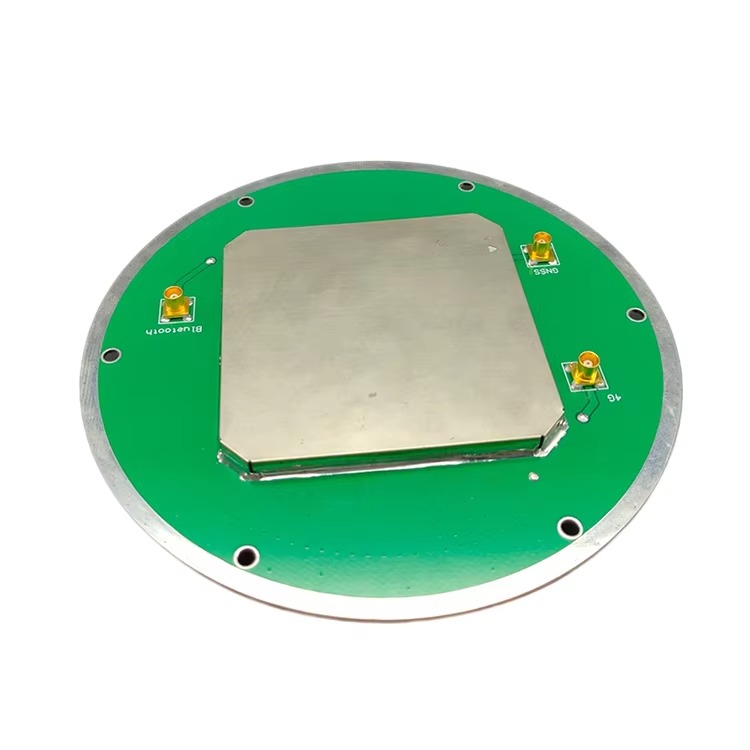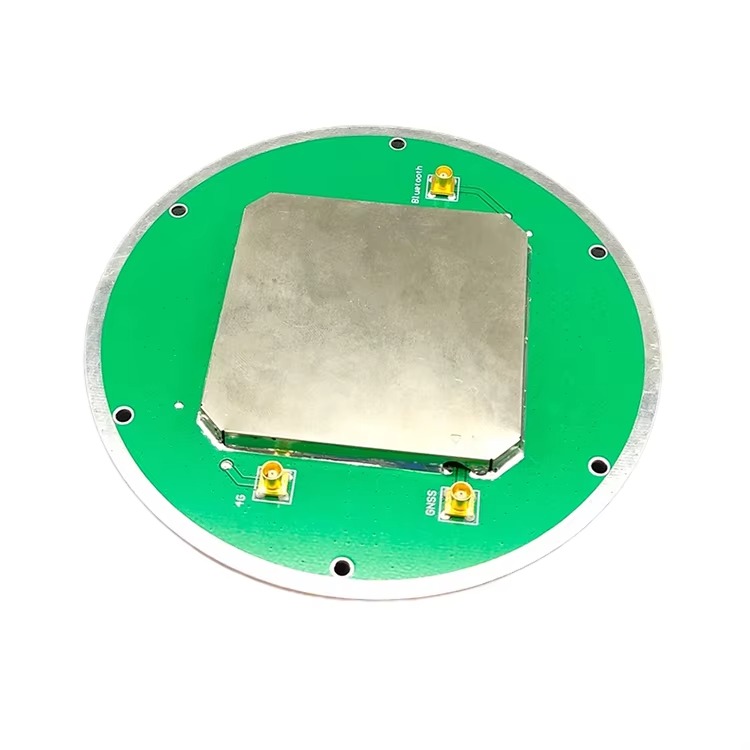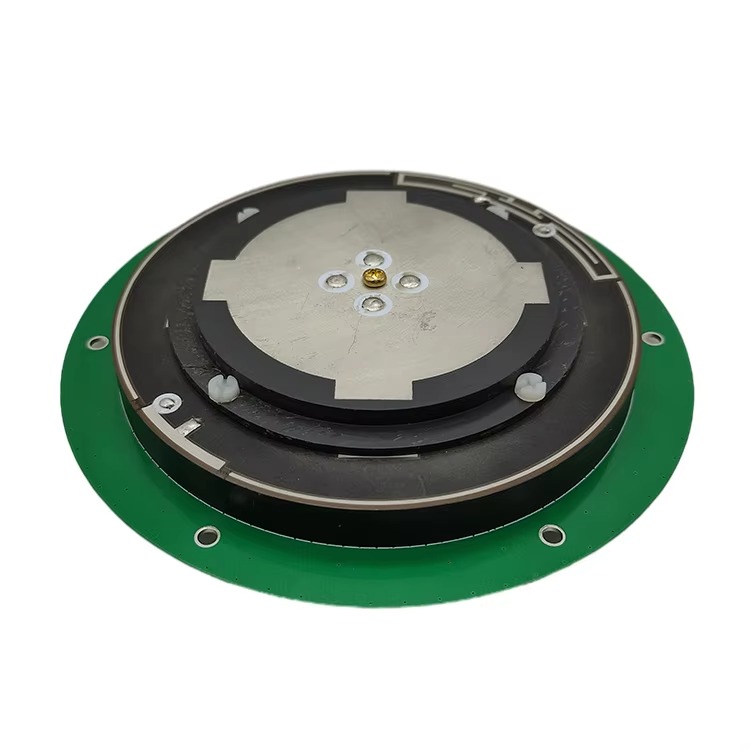5.1 Current Applications Across Industries
5.1.1 Construction and Infrastructure Development
The construction industry is one of the largest users of Rugged RTK Surveying Antennas, leveraging their precision and durability to streamline project workflows. In highway construction, for example, rugged RTK antennas are mounted on graders, excavators, and pavers to ensure that the roadbed, base, and asphalt layers are laid to the exact design specifications. A highway construction project in Germany used rugged RTK antennas to achieve a vertical accuracy of 2 cm for the road surface, reducing the need for manual leveling and ensuring that the road meets safety standards for drainage and vehicle handling. The project also reported a 30% reduction in construction time, as the real-time positioning data eliminated delays caused by waiting for survey teams to stake out reference points.
In high-rise building construction, rugged RTK antennas are used to monitor the alignment of structural elements, such as steel beams and concrete columns. During the construction of a 50-story skyscraper in Singapore, a rugged RTK antenna was mounted on a crane to precisely position steel beams weighing up to 20 tons. The antenna’s ability to operate in high winds (up to 60 km/h) and heavy rain ensured that beam placement was accurate to within 1 cm, preventing costly rework and ensuring the structural integrity of the building. Additionally, rugged RTK antennas are used for deformation monitoring during construction, tracking small movements of the building as it is built to ensure it remains stable.
5.1.2 Mining and Extractive Industries
Mining operations rely on Rugged RTK Surveying Antennas to ensure safe and efficient extraction of minerals, coal, and oil. In open-pit mining, rugged RTK antennas are mounted on haul trucks, loaders, and drills to optimize the mining process. For example, a coal mine in South Africa uses rugged RTK antennas to guide drill rigs to precise locations, ensuring that blast holes are drilled at the correct depth and spacing. This precision reduces the amount of overburden (rock and soil covering the coal) that needs to be removed, lowering fuel consumption and increasing coal recovery rates. The mine reported a 15% increase in coal production after implementing rugged RTK antennas, as well as a 25% reduction in drill bit wear due to more accurate drilling.
Underground mining is another critical application, where rugged RTK antennas are used in conjunction with inertial measurement units (IMUs) to navigate mining equipment in areas with no GNSS signal. The IMU collects data on the equipment’s acceleration and rotation, while the rugged RTK antenna provides periodic position updates when it is near the mine entrance or ventilation shafts. This hybrid system allows for accurate positioning of load-haul-dump (LHD) machines and trucks, reducing the risk of collisions and improving the efficiency of material transport. A gold mine in Australia reported that using this system reduced equipment collisions by 60% and increased the amount of ore transported per shift by 10%.
5.1.3 Environmental Monitoring and Disaster Response
Rugged RTK Surveying Antennas play a vital role in environmental monitoring, enabling scientists to collect accurate data on climate change, land degradation, and natural disasters. In glacier monitoring, for example, rugged RTK antennas are installed on stakes embedded in glaciers to measure ice movement and thickness changes. A research team in Greenland uses rugged RTK antennas to track the movement of the Jakobshavn Glacier, one of the fastest-moving glaciers in the world. The antennas’ ability to operate in temperatures as low as -50°C and withstand strong winds allows the team to collect data year-round, providing insights into how climate change is affecting glacier retreat. The data collected has been used to improve climate models, predicting a 0.5-meter rise in sea level by 2100 due to melting glaciers.
In disaster response, rugged RTK antennas are used to map damage, assess terrain stability, and guide rescue efforts. After the 2022 floods in Pakistan, relief organizations used rugged RTK antennas mounted on UAVs to create 3D maps of flooded areas. The antennas’ ability to operate in heavy rain and high humidity allowed the teams to quickly identify submerged roads, damaged buildings, and areas where people were stranded. This data was used to prioritize the deployment of boats and helicopters, saving an estimated 500 lives. Additionally, rugged RTK antennas are used to monitor the stability of landslide-prone areas, providing early warning of potential slides and allowing communities to evacuate safely.
5.2 Future Trends Shaping Rugged RTK Surveying Antennas
5.2.1 Integration with Emerging Technologies
The future of Rugged RTK Surveying Antennas lies in their integration with emerging technologies, such as 5G, AI (Artificial Intelligence), and LiDAR, to create more powerful and versatile systems. 5G integration will enable faster transmission of correction data between the base station and rover, reducing latency and improving real-time positioning accuracy. In urban environments, where cellular networks are dense, 5G will allow rugged RTK antennas to maintain a stable connection even in areas with high interference. For example, a 5G-enabled rugged RTK antenna could transmit correction data at speeds of up to 1 Gbps, reducing latency to less than 10 milliseconds— critical for applications such as autonomous construction vehicles, which require instant positioning updates to avoid collisions.
AI integration will enhance the antenna’s ability to mitigate interference and improve signal processing. AI algorithms can learn to recognize patterns of interference (e.g., jamming or spoofing) and automatically adjust the antenna’s filters to suppress them. For instance, an AI-powered rugged RTK antenna could detect a jamming signal within 0.1 seconds and switch to a backup frequency band, maintaining continuous positioning. AI can also be used to optimize the antenna’s power consumption, adjusting the gain of the LNA and the operation of the adaptive filters based on signal conditions. This would extend battery life for handheld devices and UAVs, addressing one of the current challenges of rugged RTK technology.
LiDAR-RTK integration is another promising trend, combining the high-precision positioning of RTK with the detailed environmental mapping of LiDAR. A rugged RTK antenna integrated with a LiDAR sensor can create 3D maps of the environment with centimeter-level positional accuracy, making it ideal for applications such as forestry inventory, infrastructure inspection, and mine planning. For example, a forestry company could use a UAV equipped with a LiDAR-rugged RTK system to measure tree heights, diameters, and volumes with unprecedented accuracy, reducing the time required for inventory surveys by 70% and improving the accuracy of timber yield estimates.
5.2.2 Miniaturization and Reduced Power Consumption
Advancements in materials science and electronics will drive the miniaturization of Rugged RTK Surveying Antennas, making them smaller, lighter, and more power-efficient. The use of MEMS (Micro-Electro-Mechanical Systems) technology will allow for the production of tiny antenna elements and LNAs, reducing the overall size of the antenna. A miniaturized rugged RTK antenna could weigh as little as 0.5 kg, making it suitable for use in small UAVs, wearable devices, and even smartphones. This would expand the range of applications, such as personal navigation for hikers in remote areas or precision tracking of wildlife.
Reduced power consumption will be achieved through the development of low-power electronics and energy-harvesting technologies. For example, a rugged RTK antenna could use a solar panel integrated into the radome to recharge its battery, extending its operation time in remote areas. Low-power LNAs made from gallium nitride (GaN) materials could reduce power consumption by 50% compared to current LNAs, while maintaining the same level of performance. This would address the power consumption challenge, making rugged RTK antennas more suitable for battery-powered applications.
5.2.3 Enhanced Anti-Jamming and Anti-Spoofing Capabilities
As the threat of jamming and spoofing grows, future Rugged RTK Surveying Antennas will incorporate more advanced anti-jamming and anti-spoofing features. One approach is the use of phased-array antennas, which consist of multiple small antenna elements that can steer the signal beam towards the satellites, reducing the impact of jamming. Phased-array antennas can also detect and reject spoofing signals by comparing the direction of the incoming signal to the known position of the satellites. For example, if a spoofing signal claims to be from a satellite in the east, but the phased-array antenna detects the signal coming from the west, it will reject the spoofing signal.
Another trend is the use of multi-constellation and multi-frequency reception to increase resilience. Future rugged RTK antennas will support not only GPS, GLONASS, Galileo, and BeiDou but also emerging constellations such as India’s NavIC and Japan’s QZSS. This will provide more satellites to choose from, reducing the impact of jamming that targets a single constellation. Additionally, reception of signals in new frequency bands (e.g., L6 for GPS) will provide more data to correct for atmospheric errors and interference, improving accuracy and reliability.
Conclusion
Rugged RTK Surveying Antennas have evolved from specialized tools for niche industries to indispensable technologies for a wide range of applications, including construction, mining, environmental monitoring, and disaster response. Their ability to deliver centimeter-level accuracy in the harshest environments— from extreme temperatures and salt spray to dust and heavy rain— has made them a critical enabler of precision geospatial measurement. Throughout this exploration, we have seen how their design (robust radomes, multi-element antennas, premium materials), working principles (RTK technology, multi-frequency reception, phase center stability), and advantages (environmental resilience, consistent accuracy, operational efficiency) have transformed industries, reducing costs, improving safety, and enabling new workflows.




































































 Language
Language
 En
En Cn
Cn Korean
Korean

 Home >
Home > 







 18665803017 (Macro)
18665803017 (Macro)













